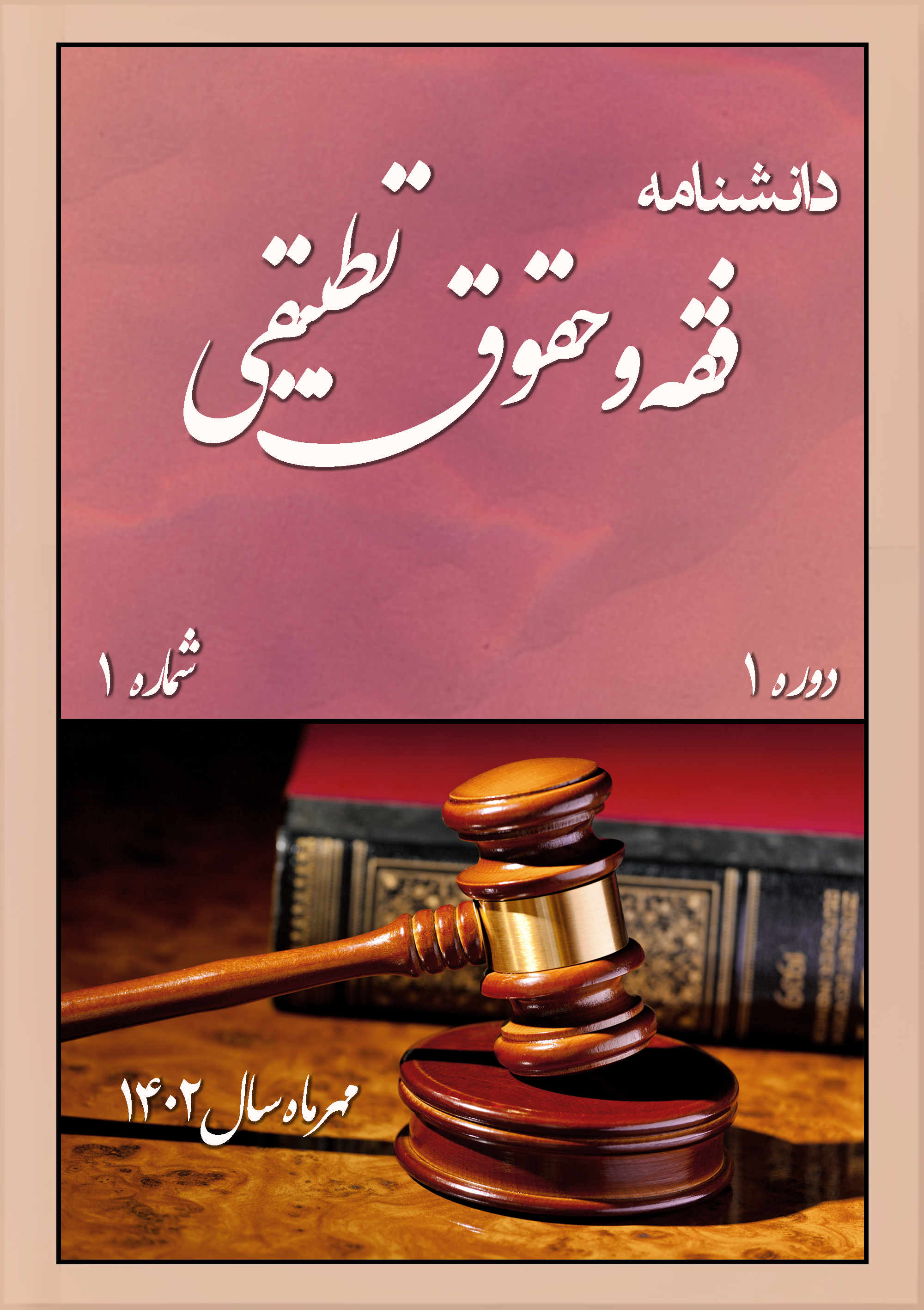The Role of Restorative Justice in Addressing Gender-Based Violence with Emphasis on the Capacities of the Iranian Legal System
Keywords:
Restorative justice, gender-based violence, multilayered accountability, women’s rights, Iranian legal system, dynamic jurisprudenceAbstract
Gender-based violence, as one of the most complex manifestations of structural human rights violations, operates through multilayered and interwoven functions that transcend interpersonal relationships and penetrate judicial, cultural, political, and economic structures. The inefficacy of traditional criminal justice responses—which predominantly focus on punishment, repression, and the denial of the victim’s status—has not only failed to guarantee the dignity and safety of victims, but has in many cases transformed the criminal process itself into a source of secondary victimization. Within this context, the inquiry into a justice-oriented alternative capable of simultaneously addressing psychological rehabilitation, social restoration, and collective accountability becomes increasingly critical. Restorative justice, by relying on intersubjective, process-based, and dialogue-centered approaches, offers an alternative paradigm for confronting gender-based violence that emphasizes human dignity, victim empowerment, voluntary participation, and actor-centered accountability. Unlike rigid and hierarchical criminal justice systems, this approach enables the reconstruction of social relationships, the healing of emotional wounds, and a rethinking of the concepts of punishment and justice. However, the implementation of this model in societies such as Iran—where legal and legislative structures are deeply influenced by jurisprudential teachings, cultural traditions, and authoritarian criminal policies—necessitates a thorough examination of local capacities and obstacles. An analysis of jurisprudential principles such as reconciliation (ṣulḥ), conflict resolution, and reform (iṣlāḥ dhāt al-bayn), in conjunction with a study of intermediary institutions such as Dispute Resolution Councils, Social Emergency Services, and the Welfare Organization, indicates that the localization of restorative justice within religious and legal frameworks is feasible, provided that such localization is aligned with international standards, supported by structural mechanisms, and oriented toward victim-centered approaches. This article, using a descriptive–analytical method within an interdisciplinary framework and drawing on comparative, jurisprudential, human rights, and documentary sources, explores the concept of restorative justice, critically evaluates its role in the domain of gender-based violence, investigates the theoretical and practical challenges of its implementation, and ultimately assesses the feasibility of applying it within the Iranian legal system. The findings suggest that the realization of justice in addressing gender-based violence requires the design of multilayered structures in which dynamic jurisprudence, restorative justice, comparative experiences, and human rights imperatives play a coordinated and synergistic role.
Downloads
References
Ahmadi, S. (2021). A Comparative Study of the Role of Dispute Resolution Councils in Achieving Restorative Justice in Iran and Some CountriesJO - Journal of Modern Criminal Law. 2(4), 109-130.
Braithwaite, J. (2002). Restorative Justice and Responsive Regulation. Oxford University Press. https://doi.org/10.1093/oso/9780195136395.001.0001
Cameron, A. (2006). Stopping the Violence: Canadian Feminist Debates on Restorative Justice and Intimate Violence. Canadian Journal of Women and the Law, 18(1), 121-146. https://doi.org/10.1177/1362480606059982
Christie, N. (1977). Conflicts as Property. British Journal of Criminology, 17(1), 1-15. https://doi.org/10.1093/oxfordjournals.bjc.a046783
Coker, D. (2006). Restorative Justice, Navajo Peacemaking and Domestic Violence. Theoretical Criminology, 10(1), 67-85. https://doi.org/10.1177/1362480606059983
Coomaraswamy, R. (2005). Violence against Women: A Global Perspective. UN Special Rapporteur on Violence against Women.
Cossins, A. (2008). Restorative justice and child sex offences: The theory and the practice. British Journal of Criminology, 48(3), 359-378. https://doi.org/10.1093/bjc/azn013
Curtis-Fawley, S., & Daly, K. (2005). Gendered Violence and Restorative Justice. Violence Against Women, 11(5), 603-638. https://doi.org/10.1177/1077801205274488
Daly, K. (2002). Restorative Justice: The Real Story. Punishment & Society, 4IS - 1, 55-79. https://doi.org/10.1177/14624740222228464
Daly, K. (2006). Restorative Justice and Sexual Assault: An Archival Study of Court and Conference Cases. The British Journal of Criminology, 46(2), 334EP - 356. https://doi.org/10.1093/bjc/azi071
Daly, K., & Stubbs, J. (2006). Feminist engagement with restorative justice. Theoretical Criminology, 10(1), 9-28. https://doi.org/10.1177/1362480606059980
Davis, R. (2009). Restorative Justice: Best Practices for Application in Domestic Violence Cases. Vera Institute of Justice.
Freeman, M., Chinkin, C., & Rudolf, B. (2012). The UN Convention on the Elimination of All Forms of Discrimination Against Women: A Commentary. Oxford University Press. https://doi.org/10.5422/fso/9780199565061.001.0001
Ghorbani, Z. (2021). Criminal Policy Supporting Women Victims of Violence. Mizan Publications.
Green, S. J. (2007). Balancing Restorative Justice Principles and Victim Needs in Domestic Violence Cases. Canadian Journal of Women and the Law, 19(2), 211-233.
Hosseini, M. (2021). The Role of Criminal Mediation in Achieving Restorative Justice in Iranian Law. Legal Perspectives Quarterly(28), 97-120.
Hudson, B. (2002). Restorative justice and gendered violence: Diversion or effective justice? British Journal of Criminology, 42(3), 616-634. https://doi.org/10.1093/bjc/42.3.616
Izadi, L. (2020). Regulating Restorative Justice in the Face of Domestic Violence in Iran. Criminal Policy Quarterly, 10(38), 117-135.
Kashanipour, F. (2020). Legal Analysis of the Protection of Victims of Domestic Violence in Iran. Journal of Women and Family Law Studies, 5(3SP - 84), 102.
Latimer, J., & Kleinknecht, S. (2000). The Effects of Restorative Justice Programming: A Review of the Empirical Evidence. Department of Justice Canada.
Mahdavi, M. (2019). The Capacities of the Welfare Organization in Supporting Vulnerable Women. Journal of Social Policy, 7(3), 87-104.
Merry, S. E. (2006). Human Rights and Gender Violence: Translating International Law into Local Justice. University of Chicago Press. https://doi.org/10.7208/chicago/9780226520759.001.0001
Morris, A. (2002). Critiquing the critics: A brief response to critics of restorative justice. British Journal of Criminology, 42(3), 596-615. https://doi.org/10.1093/bjc/42.3.596
Najafi, S. M. H. (2021). Jawahir al-Kalam fi Sharh Shara'i al-Islam (The Jewels of Speech in the Explanation of Shara'i al-Islam) (Vol. 38). Dar al-Kotob al-Islamiyeh.
Narimani, M. (2022). Analysis of the Efficiency of Mediation in the Iranian Judicial System. Journal of Social Law(22), 40-55ER -.
Sadeghi, F. (2022). A Critique of Iranian Criminal Policy in Combating Domestic Violence Against Women. Women's Rights Research, 12(3), 85-103.
Skelton, A., & Batley, M. (2006). Charting progress, mapping the future: Restorative justice in South Africa. Restorative Justice Centre.
Sotoudeh, N. (2019). Domestic Violence and Criminal Reaction: Sociological and Legal Analysis. Mizan.
Stubbs, J. (2007). Beyond apology? Domestic violence and critical questions for restorative justice. Criminology & Criminal Justice, 7(2), 169-187. https://doi.org/10.1177/1748895807075570
Tabatabaei-Nejad, A. (2018). A Jurisprudential-Legal Study on the Challenges of Restorative Justice with a Focus on Family Violence. Journal of Jurisprudence and Law, 10(36), 70-91.
Tauri, J. M. (2010). Indigenous Perspectives and Experiences: New Zealand. In Restorative Justice and Violence Against Women (pp. 343-359).
UN Women. (2021). Handbook on Restorative Justice and Violence against Women.
Van Ness, D. W., & Strong, K. H. (2015). Restoring Justice: An Introduction to Restorative Justice. Routledge. https://doi.org/10.4324/9781315721330
Walgrave, L. (2008). Restorative Justice, Self-interest and Responsible Citizenship. Willan Publishing.
Zarei, F. (2020). A Comparative Critique of the Place of Criminal Mediation in Iranian Law and International Documents. Criminal Law Research Quarterly, 8(1), 81-102.
Zehr, H. (2002). The Little Book of Restorative Justice. Good Books.
Downloads
Published
Submitted
Revised
Accepted
Issue
Section
License
Copyright (c) 2025 Mehdi Moradzadeh (Author); MohammadAli Kafaeifar

This work is licensed under a Creative Commons Attribution-NonCommercial 4.0 International License.









